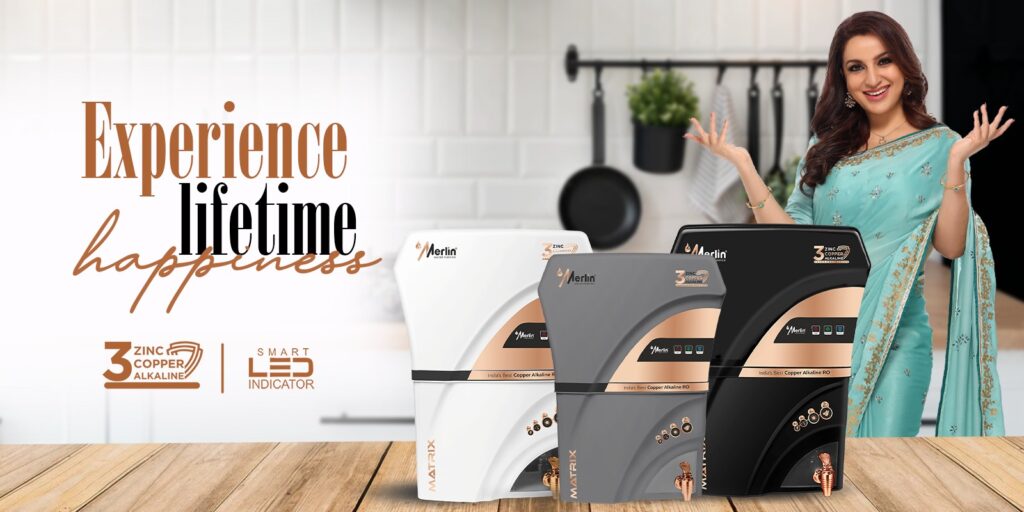The Reverse Osmosis (RO) water purifier is a technological innovation that ensures that the water we consume is not just a source of sustenance, but a vital contributor to our well-being. An industrial RO water purifier is a sophisticated device that harnesses the power of advanced filtration techniques, including a semi-permeable membrane, to cleanse water from impurities, contaminants, and dissolved solids. It is a guardian of purity, transforming ordinary tap water into a crystal-clear elixir that’s free from pollutants.
We’ll look at how Ro UV water purifiers work, why they’re important, and how we can improve life by ensuring access to clean, refreshing water. Together, we’ll satisfy our thirst and quest for purity.
Explanation of Reverse Osmosis Process:
The best RO water purifier uses a membrane to remove water impurities. Here’s a step-by-step explanation of how the reverse osmosis process works:
- Pre-Filtration:
Before water goes into the RO system, it often goes through pre-filtering stages to remove large particles, sediment, and chlorine. This helps protect the RO membrane.
- Pressurization:
The water goes through a semi-permeable membrane with pressure. This pressure lets water molecules go through the membrane, leaving only the contaminants behind.
- Semi-Permeable Membrane:
The heart of the RO system is the semi-permeable membrane. It has tiny pores that let water molecules pass through but stop bigger molecules, ions, and contaminants.
- Filtration:
Pressurized water pushes against the membrane, forcing water through the pores. Anything trapped in the water, like minerals, salts, bacteria, and viruses, is flushed away as wastewater. The result is purified water.
- Product Water:
Water that goes through the membrane is purified or product water. This water is free from most contaminants, which results in high-quality drinking water.
- Wastewater:
The remaining water that doesn’t go through the membrane is wastewater or brine. This water is usually discharged from the system to prevent concentrated impurities from being made.
- Post-Treatment:
After the RO process, the water may have post-treatment stages to remineralize or adjust its pH level to meet taste and quality standards.
Components of an RO Purifier
The RO UV UF water purifier is a system of components that works together to deliver clean and safe drinking water. It has the following key components:
- Inlet Valve:
This valve controls how much-untreated water comes into the RO system. It connects to the main water supply.
- Pre-Filter:
The pre-filter is the first line of defence against small particles, sediment, and chlorine in the RO system. This helps protect the membrane of the RO system.
- RO Membrane:
The RO membrane is the key part of the system. It lets water go through but not things like minerals, heavy metals, bacteria, and impurities. The Copper RO water purifier comes out one side, while the impurities go to the drain.
- Post-Filter:
After passing through the RO membrane, the water goes through a post-filter to remove any remaining contaminants and improve taste and odour.
- Storage Tank:
The storage tank holds water until it’s needed. It keeps a steady supply of clean water for use.
- Faucet Dispenser:
This is where users get access to purified water. The faucet dispenser is typically installed on the kitchen sink or countertop, providing easy access to clean drinking water.
- Benefits of Using RO Purifiers
Water purifiers have many benefits, making them popular for getting safe drinking water. Here are some key advantages of using RO water purifier service:
- Effective Contaminant Removal:
RO systems remove a wide range of contaminants, such as dissolved solids, heavy metals, chlorine, bacteria, viruses, and organic impurities. This makes water extremely pure and safe to drink.
- Improved Taste and Odor:
RO purifies water by removing unwanted minerals and impurities. This makes water taste better and more refreshing, making it more enjoyable to drink.
- Removal of Harmful Substances:
Ro purifiers remove harmful substances that can harm health. This is important in areas with water quality issues, where drinking untreated water can lead to waterborne illnesses.
- Versatility:
RO systems can be used in many settings. They can be installed under the kitchen sink or as whole-house systems. They are suitable for residential, commercial RO water purifiers, and industrial applications.
- Consistent Supply:
RO purifier has a storage tank. This means they have water even when it’s needed most. They’re convenient for daily use.
- Reduced Environmental Impact:
- Conclusion A. Recap of Key Points B. Emphasis on the Importance of Clean Drinking Water C. Final Thoughts on RO Purifiers
Conclusion:
Merlin Ro’s best RO water purifier in India makes drinking water better. Our technology removes contaminants and enhances taste, and we’re committed to reducing plastic waste. Join us in safeguarding your health, the planet, and your wallet. Choose Merlin Ro for pure, sustainable, and cost-effective hydration.
FAQS:
- What does “RO” stand for in a water purifier?
RO stands for “Reverse Osmosis.” It is a water purification technology that uses a semi-permeable membrane to remove contaminants and impurities from water.
- What is the full form of “RO” in water purification?
The full form of “RO” is “Reverse Osmosis.” It describes the process by which water is purified using a specialized membrane that reverses the natural osmotic flow of solvents.
- How does it work?
An RO UV UF TDS water purifier uses a semi-permeable membrane to separate water molecules from contaminants and impurities. It forces water through the membrane with pressure, leaving contaminants behind and producing clean drinking water.
- What does “RO purifier” mean?
A “Domestic RO water purifier” is a system that uses the Reverse Osmosis process to remove dissolved solids, minerals, heavy metals, and other contaminants from water, ensuring safe and clean drinking water.
- What are the benefits of using a water purifier?
Using a water purifier offers benefits such as safe drinking water, improved taste, and the removal of contaminants. This is an effective choice for ensuring high-quality drinking water purifier for homes and businesses.








